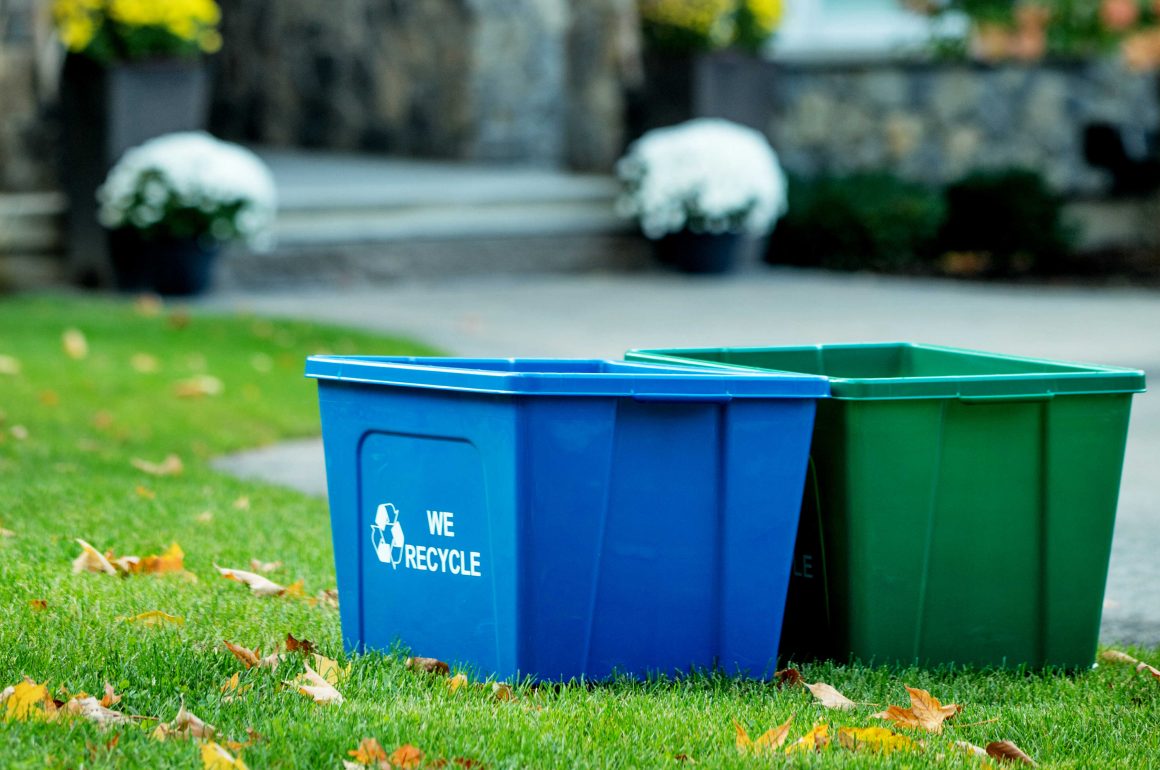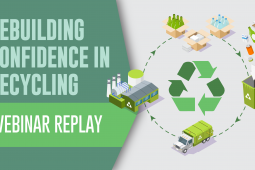The popularity of Recycling has seen its ups and downs since the idea was sprouted many years ago. Although some give credit to the dinosaurs for starting the recycling trend by decomposing to produce various oils and gasses, we’re going to stick to recycling milestones (good and bad) that won’t stretch the imagination too far.
From the first municipal dump program in 500 B.C. to a revolutionary idea in 2014 that could lead to plastics recycling themselves (actually not as outlandish as crediting dinosaurs for recycling), we’ve compiled a timeline of the most important events in recycling history.
500 B.C.
Athens organizes the first municipal dump program in the western world. Local laws dictate that waste must be disposed of at least one mile from the city walls. And we think we have it rough today having to drag it out to the curb…
1031
Japan begins the first-ever recorded reuse of waste paper. All of the documents and paper are recycled and re-pulped into new paper then sold in local Staples across the country. And by “Staples” we mean local mom and pop shops.
1690
The recycled paper manufacturing process is introduced. The Rittenhouse Mill near Philadelphia will make paper from fiber derived from recycled cotton and linen rags.
1776
As America declares its independence from the English, rebels turn to recycling to provide material to fight the War of Independence.
1865
The Salvation Army is founded in London, England and begins collecting, sorting, and recycling unwanted goods. The Household Salvage Brigades employ the unskilled poor to recover discarded materials. The organization and its program migrated to the United States in the 1890’s.
1897
New York City creates a materials recovery facility where trash is sorted at “picking yards” and separated into various grades of paper, metals, and carpet. Burlap bags, twine, rubber and even horse hair are also sorted for recycling and reuse.
1900’s
Recycling advocates and reuse programs embrace the phrase “Waste as Wealth” to describe the revenue to be earned from sorting and reselling items found in household trash.
1904
The first American aluminum can recycling plants open in Chicago and Cleveland.
1916 – 1918
Due to massive shortages of raw materials during World War I, the Federal government creates the Waste Reclamation Service with the motto “Don’t Waste Waste – Save It.”
1930’s
Many people survive the Great Depression by peddling scraps of metal, rags, and other items.
1940
Goods such as nylon, rubber, and many metals are rationed and recycled to help support the war effort.
1955
The August 1st issue of Life magazine offers a two-page article on “Throwaway Living.” Consumers are progressively sold on the idea that single-use items are a necessity of the modern lifestyle.
Ease and convenience become the two most desirable qualities in product marketing, inevitably leading to parks, forests, and highways becoming littered with garbage.
1964
The all-aluminum can is introduced. Recognizing the value of used aluminum cans as a raw material for making new cans, the aluminum industry will soon begin creating a massive system for recycling and redeeming used beverage containers.
1965-1970
The Mobius Loop is introduced as the symbol for Reduce, Reuse, Recycle. In the form of a Mobius strip, the symbol was designed by Gary Anderson after a Chicago-based recycled-container company sponsored an art contest to raise environmental awareness.
1970
The first Earth Day brings national attention to the problem of increasing waste and the importance of recycling. Earth Day was founded in the U.S by U.S Senator Gaylord Nelson and globally by entrepreneur John McConnell. Now, Earth Day is supported by over 192 countries on April 22nd.
Every year over 1,000,000,000 people and almost every school-aged child takes part in annual Earth Day celebrations to promote conserving our environment by protecting, recycling, cleaning, and innovating.
1971
The first “Bottle Bill” is born: Oregon introduces a refundable deposit (a nickel) on beer and soda bottles as an incentive to recycle. Canadian Government established the Department of Environment, commonly referred to as Environment Canada.
1972
The first recycling mill is built in Conshohocken, Pennsylvania.
Beverage container recycling regulations were first introduced province-wide in Alberta, Canada.
1974
University City, MO becomes one of the first municipalities in the country to offer Curbside Recycling to its residents
The non-profit organization “Is Five” organizes Canada’s first multi-material curbside pickup in The Beaches neighborhood located on the east side of Toronto which encompassed 80,000 households.
1976
The Federal Resource Conservation and Recovery Act is enacted to close open dumps, create standards for landfills, incinerators, and the disposal of hazardous waste.
1981
Woodbury, New Jersey becomes the first city in the US to mandate recycling.
1983
The first Canadian “blue box” curbside recycling project is implemented in Kitchener/Waterloo with 1,500 residents participating.
1986
A second municipal blue box recycling program was started in Mississauga, Ontario. It is considered to be the largest recycling initiative in North America.
1987
A garbage-laden barge called The Mobro cruised up and down the East Coast of the U.S. looking for a place to unload. This sparked a public discussion about waste management and served as a catalyst for the country’s growing recycling movement.
1988
The number of curbside recycling programs in the US increases to about 1,050.
1999
McDonald’s stops using Styrofoam containers. The 20th-anniversary theme for Earth Day is recycling.
1991
Germany made history when it passed an ordinance shifting responsibility for the entire life cycle of packaging to producers.
1992
The total number of curbside programs in the US grows to a total of 5,404, a growth of 4,354 programs in only 4 years!
1995
Americans recycle a record 47.6 billion soft drink containers, an increase of 500 million over the previous year. Aluminum cans are recycled at a rate of 63% in the U.S. with the highest state-wide rate in California at 80%.
There are more than 10,000 recycling centers nationwide and at least 4,000 curbside collection programs.
U.S. collection grows from 1.2 billion cans in 1972 to more than 62 billion cans in 1995 through curbside recycling programs and more than 10,000 recycling centers.
1996
The U.S. recycles at a rate of 25 percent; EPA sets a new goal of 35 percent. Meanwhile, in Germany, Elopak and SINTEF team up to sell the first infra-red sorting machine.
2000
The EPA confirms a link between global warming and waste, showing that reducing our garbage and recycling cuts down greenhouse gas emissions.
2006
Dell Computer begins offering a free recycling service for their products—no additional purchases required—sparking the movement of E-waste recycling.
2007
Five states passed laws requiring that unwanted electronics be recycled. San Francisco becomes the first U.S. city to prohibit the distribution of plastic bags by grocery stores.
2012
More than 585 million pounds of consumer electronics are recycled—an increase of 125 million pounds (more than 25 percent) over 2011.
2014
A new class of industrial polymers discovered by researchers from IBM may revolutionize materials technology. The newly-discovered materials are exceptionally strong and light, and could find use in a wide variety of applications.
One of the most remarkable properties of one of these new materials is the ability to repair itself. When pieces are severed apart, and then placed in close proximity to each other, the segments begin to “self-heal,” reforming molecular bonds within a matter of seconds.
Scientists believe this may be the ultimate answer to drastically reducing waste. We believe that, although excited at the idea, we`ll believe it when we see it!
2015
California enacts the first-ever state-wide ban on plastic bags in grocery and convenience stores.
2016
A team of Japanese scientists discovered a species of bacteria that eats plastics commonly found in water bottles. The ideonella sakainesis secretes an enzyme that turns the PET to generate an intermediate chemical that is taken up by the cell, then broken down even further giving the bacteria carbon and energy to grow!
2017
An engineer at Stanford and her team have come up with a new semiconductor that is not only as flexible as skin but is also biodegradable. This new tech could help drastically decrease e-waste in the future.
Considering that the almost 50 million tons of e-waste have been thrown out so far in 2017, a 20% increase from 2015, this is very much a welcome discovery!
2018
China enforced several import bans in 2018 that resulted in significant shifts in the recycling industry. January 1st, 2018: China bans imports of 24 categories of recyclable materials. March 1st, 2018: China announces the quality standard that scrap material imports must meet from now on, a 0.5% contamination standard for plastics and fibers. As of Dec 31st, 2018 – 16 more “solid waste” scrap materials were banned from importing. The ban of 16 more will go into effect as of December 31st, 2019. With these import bans, the opportunity arises for western world countries to create better recycling practices at home. Hopefully we will see less contamination of recyclable materials as a result.
On April 30th, 2018, The Ministry of the Environment and Climate Change of Ontario released their Food and Organic Waste Framework. This framework includes strategies to address and reduce food waste issues within the province. The province began consulting for their upcoming ban for food and organic waste, which prohibits this waste from ending up in disposal sites. This ban will be implemented by 2022, with, hopefully, many other places around the world following suit!
The Great Pacific Garbage Patch is the largest garbage island in the ocean gyres located between California and Hawaii. The issue of these ocean plastics led to the development of the Ocean Cleanup’s System 001 marine plastic collection prototype. This system uses cutting-edge technologies to remove immense amounts of plastics from our oceans. It is 2,000 feet long and uses the combination of 10- foot screens and the ocean’s natural current to catch the floating plastic.
After years of development, the Ocean Cleanup System 001 set out for sail on September 8th, 2018, from a port in San Francisco. Everything was smooth sailing until some issues arose in November regarding plastic escaping from the system. Shift 3 – a ship with materials was sent to help. Another minor setback occurred, and as of December 31st, 2018, it was announced that the Ocean Cleanup System would port for repair, after just three months on the Pacific Ocean. However, System 001 is announced to be back on the ocean in 2019!
2019
A year later, China still refuses the imports of many types of plastic, meaning a global increase of plastic in landfills, and subsequently oceans and other waterways.
The United States “Save Our Seas 2.0” bill passed in early 2019. The legislation was developed with the intent to reduce plastic pollution in the environment, through initiatives such as clean-up efforts and finding new uses for existing plastic waste.
2019 also saw many plastic packaging bans in different states across the U.S., such as plastic bags, straws, and polystyrene foam containers (commonly used for takeout food).
Canada announces a ban on single-use plastic by 2021. All businesses in Canada are obligated to comply with the new law, and many start right away by introducing bio-degradable or paper straws, eliminating plastic shopping bags, and encouraging reusable drinkware.
2019 was surely a year that focused on plastic recycling. This topic reached a new height of public concern throughout the year, as many celebrities such as Leonardo DiCaprio, Nina Dobrev, and Chris Hemsworth spoke out on social media and other platforms about plastic pollution, aquatic wildlife, and ocean cleanups. This publicity absolutely shaped the recycling discussions in the media, having a major impact on the industry and the direction for the future of plastic recycling.



























